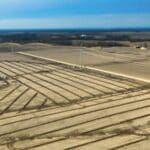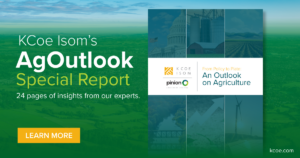Negotiating wind and solar leases can be complicated. The contract language must define provisions a farm or ranch can live with for two or more generations. It’s important to determine fair market value for the energy produced and for the land that will host wind or power generation. And when the lease ends, the project and restoration funds must leave the land with viable soil that can allow crops to be grown again.
Another challenge to wind and solar involvement is proximity to existing energy infrastructure. Today, wind and solar participation is limited to a distance of 1½ miles from a transmission line or substation. But the Biden Administration’s infrastructure package promotes more renewable energy construction to further expand green opportunities in rural America.
In addition, resistance to change can hold back wind and solar development. That can often start with hesitation to sign a wind or solar power agreement. When big energy companies come into small rural communities, the tendency is to distrust the unfamiliar. That can worsen if a landowner feels pressure to sign a lease with an energy company. Another potential problem is not being informed enough to make a good leasing decision.
With the right advice, however, these power-generating ventures can greatly benefit agricultural businesses and rural landowners, augmenting income for decades to come. Momentum is growing from the Carolinas to Colorado to California. Solar and wind energy generation will play a significant role in the future of U.S. agriculture.
Fast Facts on Record Growth in Wind and Solar Power
- In 2020, the U.S. installed a record amount of solar (15 gigawatts) to total 76 gigawatts, representing 3% of the current electricity supply.
- A record 16,836 megawatts of U.S. wind capacity was installed in 2020. That’s enough to power nearly 6 million American homes.
- Wind power installations outpaced those in solar power for the first time in several years and represented $24.6 billion of investment.
- Combined, wind and solar will provide 75% of electricity by 2035 and 90% by 2050, transforming the electricity system.
- In 2020, wind power surpassed 121,985 MW of total installed capacity.
- Sixteen states now get 10% of their in-state electricity generation from wind.
- Texas leads the nation in installed wind capacity with 32,686 MW.
- Iowa produces more of its electricity from wind than any other state, generating 57% of its total electricity from wind power.
- In 2020, American manufacturers accounted for more than 71% of domestic small wind sales.
Source: U.S. Department of Energy
Contact a KCoe land and renewable energy strategist to discuss secure and legitimate options for your land.
For more on this and other key trends in American agriculture, click here to read From Policy to Plate: An Outlook on Agriculture.










